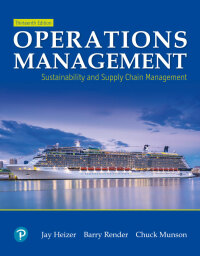3. What were the risks of keeping the same crew on the Seattle ChicagoSeattle route? Good airline...
Question:
3. What were the risks of keeping the same crew on the Seattle—
Chicago—Seattle route? Good airline scheduling is essential to delivering outstanding customer service with high plane utilization rates. Airlines must schedule pilots, flight attendants, aircraft, baggage handlers, customer service agents, and ramp crews. At Alaska Airlines, it all begins with seasonal flight schedules that are developed 330 days in advance.
Revenue and marketing goals drive the potential routing decisions, but thousands of constraints impact these schedules. Using SABRE scheduling optimizer software, Alaska considers the number of planes available, seat capacity, ranges, crew availability, union contracts that dictate hours that crews can fly, and maintenance regulations that regularly take planes out of service, just to name a few. Alaska’s scheduling department sends preliminary schedules to the human resources, maintenance, operations, customer service, marketing, and other departments for feedback before finalizing flight schedules.
Alaska Airlines’ historic mission is to serve its extremely loyal customer base in the remote and unreachable small towns in Alaska. Serving many airports in Alaska is especially complex because the airline requires its pilots to have special skills to deal with extremely adverse weather, tight mountain passes, and short runways. Some airports lack full-time TSA agents or strong ground support and may not even be open 24 hours per day. In some cases, runways are not plowed because the village plow is busy clearing the roads for school buses. Navigational technology developed by Alaska Airlines has significantly reduced weather-related cancelled flights as Alaska can now land where many other carriers cannot
Step by Step Answer:

Operations Management: Sustainability And Supply Chain Management
ISBN: 9780135225899,9780135202722
13th Edition
Authors: Jay Heizer; Barry Render; Chuck Munson






